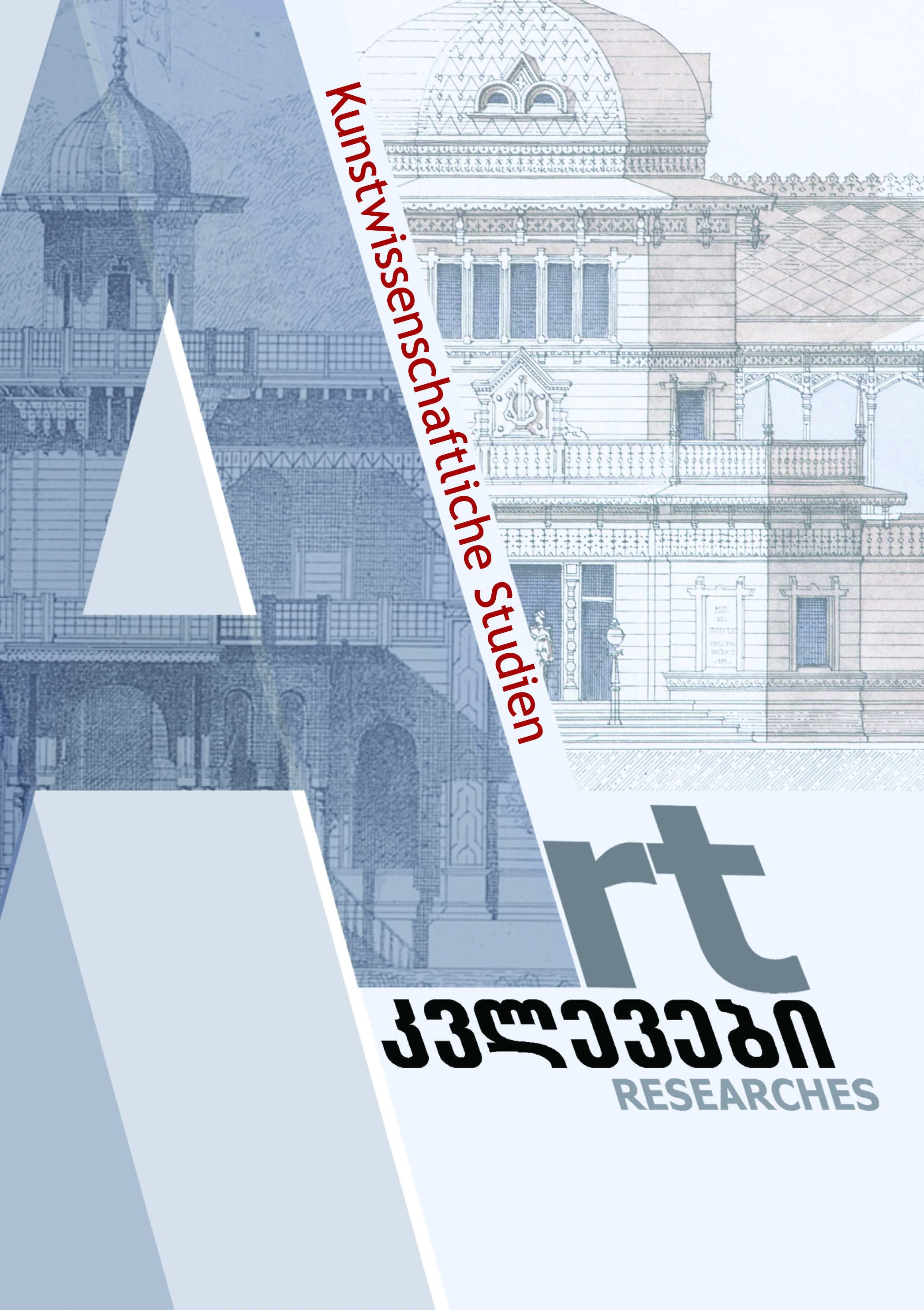მიზანსცენა
Main Article Content
ანოტაცია
The article represents a research part of the textbook (textbook or auxiliary material) in the subject Criticism for students of the Faculty of Theatre Studies. Its aim is to provide students with quick access to essential works of scenography created in the field of Georgian theatre for the purpose of writing a review or a research work. In all my completed work there will be all the selected examples, existing in Georgia from the beginning until today, created in tandem of the director and the scenographer. Thus, we will have an opportunity to follow in the Georgian theatre the joint work of the director, the set designer and the actor, as well as to see the logical and harmonious result of their cooperation in the stage work - the evolutionary portrait of the most important component of the theatrical art.
In the present article congenial scenographic examples are selected - which were already created from the director's concept in the classical stage direction phase. It is the analysis of the scenography of David Kakabadze in the stage play "Hoppla, wir leben!" by Ernst Toller directed by Kote Mardjanishvili, the scenography of Irakli Gamrekeli in Friedrich Schiller's "The Robbers" directed by Alexander Ackmeteli. Of course, parallel to the analysis of the set design of the works of Georgian theatre reformers, the socio-political events of the events concerned will be discussed, as well as an overview of the most important trends in the development of processes in theatre and visual arts. It should be emphasized that the scenographic decoration of a stage work, the process of its transformation is influenced not only by the professional qualification of the artist and his inner connection to the specificity of art, but also by the way of the cooperation of the painter with the director, the priorities chosen in this process. Moreover, in the process of creation of scenography of performance it is also important to take into account national traditional forms and to understand the processes of innovation of visual arts and the art genres that collide with them. These innovations in the visual arts, as well as the theatrical lines and ideas, are usually realized and actually used in the direction of the performance. This is complemented by the acting art of the performers.
At the beginning of the article, the great art reforms that existed in the theater before the development of professional scenography are reported. The innovations in rhythmics, sculpture, dance theatre, directing, acting, stage design and lighting systems (Pre-Raphaelites, A. Apia, E. G. Craig, G. Fuchs, F. Delsarte, E. Jaques-Dalcroze, S. Volkonsky, I. Duncan, R. Steiner, S. Diaghilev, "Mir Iskusstva", I. Rubinstein, G. Gurdjieff, A. Salzmann and others). As is known, at the beginning of the 20th century, together with the formation of professional directing, the successful use of all these components had largely caused the necessity of the development of synthetic theatre, conceptual directing and ensemble stage work. By taking everything into account, the process naturally led to the creation of a co-player at the stage of classical directing - an intermediate, a co-creator of the performance - the director's collaborator, co-creator who was a co-author of the directing concept and could dictate the actors' behaviour. Later, the need arose to find a scenographer who was familiar with the new artistic processes; it also became necessary to create an ensemble, a team and a school of scenographers to use them in the preparation phase of a performance.
The article also discusses the "golden age" of Theatre directing - the most important representatives of Russian modernist directing - V. Meyerhold, Y. Vakhtangov, A. Tairov. In particular, the article discusses the stage works of these masters, in which the theatricalized forms of the then grey, apocalyptic revolutionary reality were transposed to the pictorial, phantasmagorical representation by the inspiration of directors, scenographers and actors.
In this article we have taken into account that in the process of creating the important historical performances the photographic material of the costumes, sets and actors also occupy a due place. For the students, the role of the scenographer in the implementation of the directorial concept is to be clearly shown, which leads to the success of the stage work.
